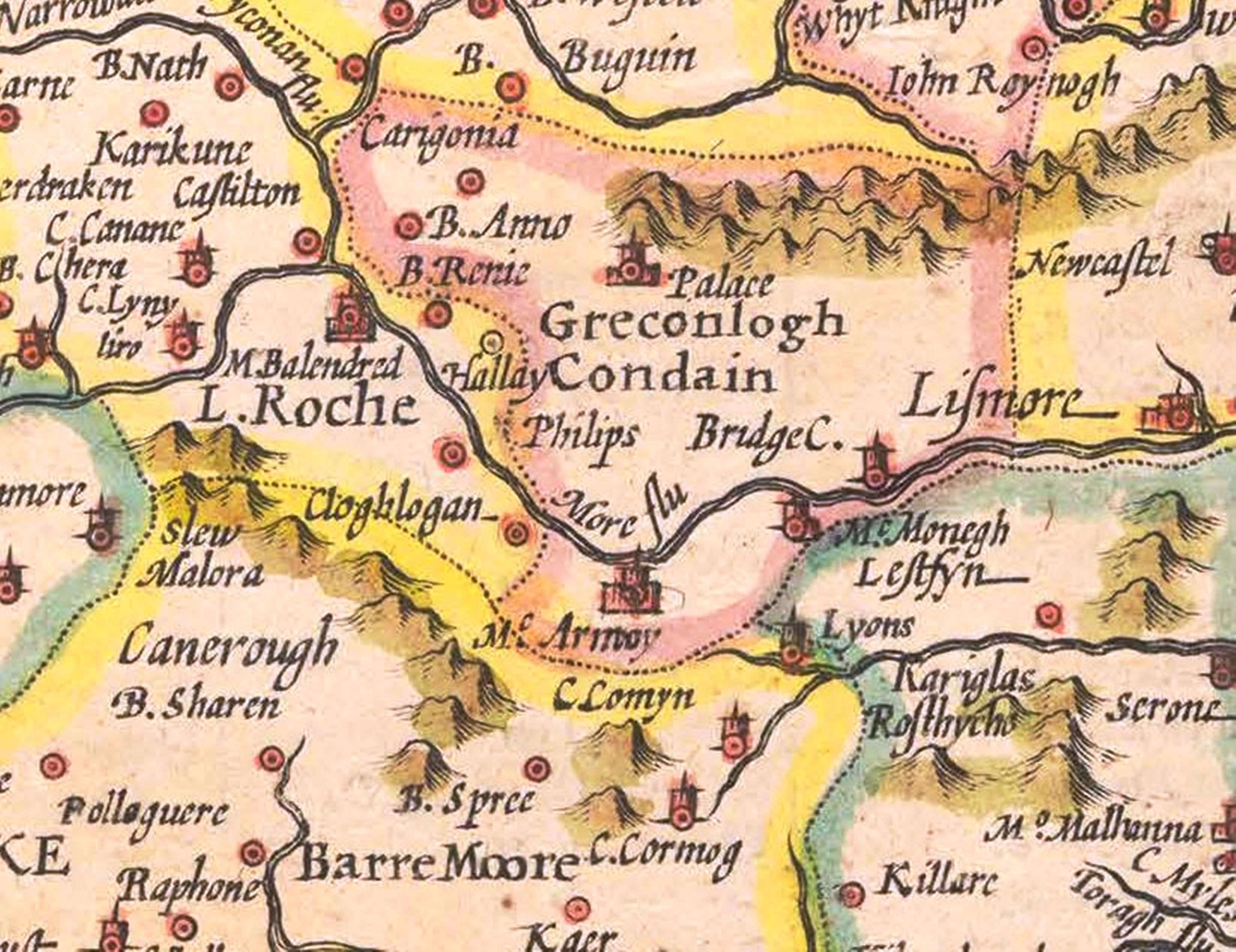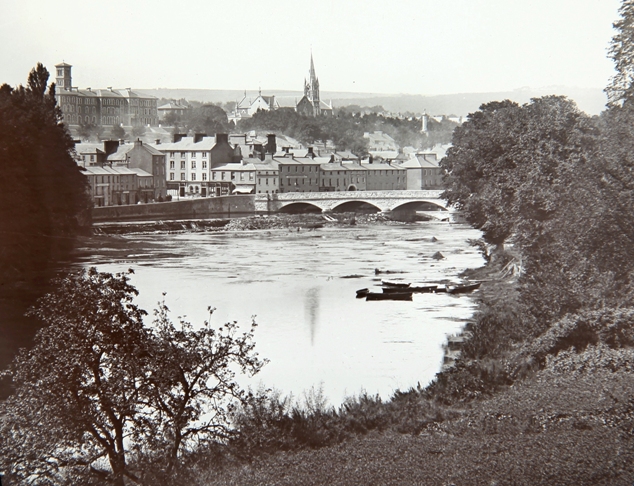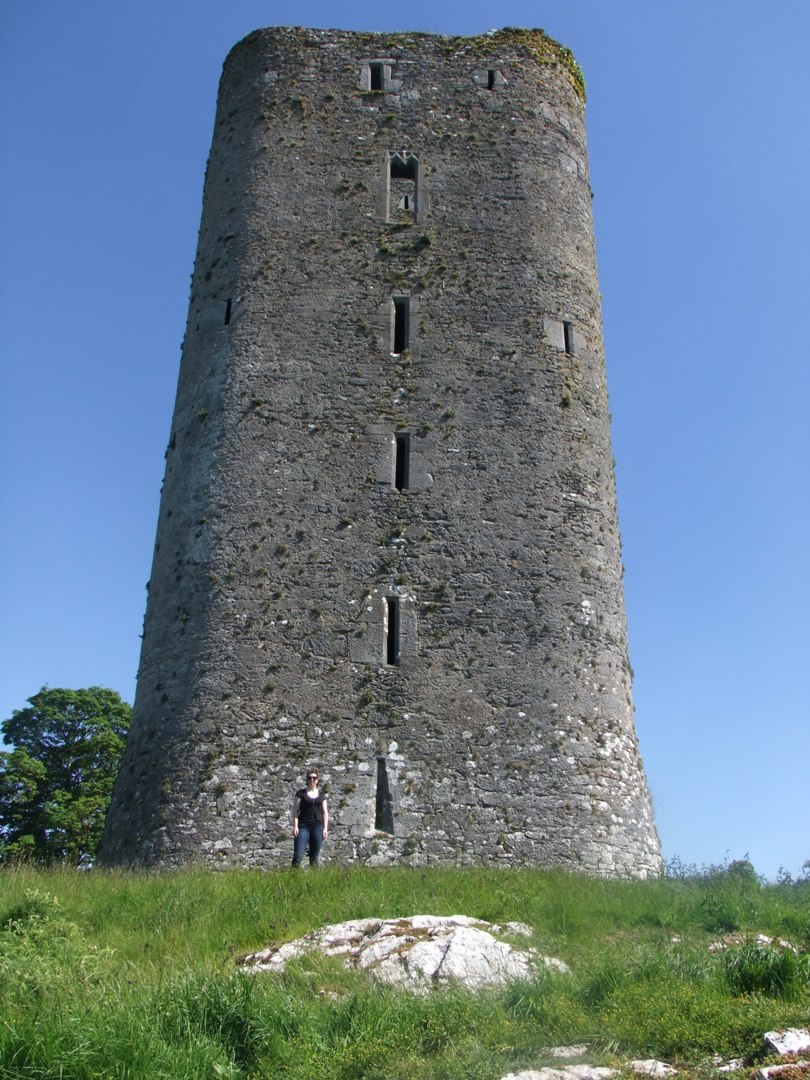Kieran’s Our City, Our Town Article,
Cork Independent, 7 January 2016
Cork Harbour Memories (Part 43)
The Men of the Free Plain
Further upstream from Lismore Castle on the beautiful River Blackwater on Speed’s map of the province of Munster (c.1610), Fermoy is depicted. A castle like structure is shown on the map. Historical panels in the town note that the settlement is said to have originated in 1170 through a foundation of a Cistercian abbey by the Roche family. On Speed’s map, the lands of the Roches are demarcated west of Fermoy and the lands of the Condons to the North.
The Roche family manuscripts are located in the Cork City and County Archives (PR28). Of Anglo-Norman descent, the Roches held one of the great lordships of Munster and from the thirteenth century were especially prominent in the Fermoy / Castletownroche area of north Cork (referred to as ‘Roches Country’). Gaelicised by the fifteenth century, in 1458 the scribe William O’Hickey compiled for Lord David Roche (‘Dáibhidh Mór’) the first part of the ‘Book of Fermoy’ MS. Written in Irish at Castletownroche, by several scribes it comprises a fragment of Lebor Gabála, a compilation of poems and material relating to the Roche family, poems of Gearóid Iarla, “lives of saints, historical tracts, genealogies, mythological tales and fragments of medical treatises”. It can be viewed in the Royal Irish Academy in Dublin (MS23).
The manuscripts of the archives detail the lineage of the Roche family. A wealthy and influential branch of the Roche family had a long association with Cork City, with several Roches being Mayor from 1488 onwards. Dominick Roche, Alderman, was Mayor in 1609 and MP for Cork County in 1639. Following the 1641 rebellion, they were expelled as well as other Irish Catholic inhabitants of the city, including Richard, Maurice and John Roche, Aldermen, and Sherriff James Roche. Maurice had his claim for restoration admitted in 1692, but the family never re-established their power structures. Other seats of the Roches include Trabolgan in east Cork and Dunderrow, near Kinsale and Kilpatrick near Ringabella. One of the Lords of Fermoy, Maurice, joined the Catholic insurgents in 1641, being eventually defeated and outlawed along with 31 other Roches, and eventually having his property confiscated.
Cloghleigh castle translated as Castle of the Greystone, was the principle stronghold of the Anglo-Norman family of Condons. The structure still stands on the lands of Moorepark, An Teagasc, Research and Innovation Centre. Fast forward in time and the castle was sold with the Cork estates by Henry Fleetwood to Stephen Moore in 1684 and passed in time to the British War Department. By 1915, Moorepark was one of the main centres of military training for the 16th Division. World War I training trenches and hundreds of temporary cabins were erected to form a greatly expanded training facility. The presence of soldiers gave an enormous boost to local trade. Everything from fodder for horses to bread and porter for the soldiers had to be supplied from the locality. Today around 4,500 members of the Irish defence forces are assigned to nearby Kilworth for training every year, including the Naval Service and Ranger Wing.
The abbey at Fermoy was dedicated to Our Lady de Castro Dei or Our Lady of the Camp of God. On what is now Ashe Quay; the monks built the town’s first weir somewhere by Ashe Quay/Abbey Street. A settlement extended around the abbey. From then the area was known as Mainistir Fhearmuí (the Monastery of the Men of the Free Plain).
Queen Elizabeth granted the Abbey lands of Fermoy to Sir Richard Grenville, a cousin of Sir Walter Raleigh, in 1591. Having campaigned against the Turks as a soldier, and in Ireland, in 1576 Grenville became sheriff of Cornwall and was knighted. Grenville was much involved, both as MP and man of action, in transatlantic settlement, especially during 1585–6 at Roanoke Island (North Carolina). In 1588 he fitted out ships against the Spanish Armada, and in 1591, under Lord Thomas Howard’s command, Grenville sailed to the Azores to intercept the Spanish treasure fleet. Detained at Flores, with many sick, Grenville, in the ship Revenge, confronted several Spanish warships. Grenville died of his wounds.
In 1621, Sir Bernard Grenville, Sir Richard’s eldest son, sold the lands of Fermoy to Sir Lionel Cranfield, a London merchant and financier (later the earl of Middlesex and Lord Treasurer of England). In 1624, Sir George Harvey purchased the lands of Fermoy on behalf of Sir Richard Boyle, 1st Earl of Cork. A timber bridge was constructed over the Blackwater in Fermoy in 1626 by Boyle at a cost of around five hundred pounds. The Cistercians operated a ferry prior to the building of the bridge and the Earl possessed an income from this of twenty five pounds per annum. The timber bridge was swept away in 1628 following a flood. There was no immediate replacement and while provision was made in the Earl’s will in 1642 for the erection of a new bridge, it was not until 1687 that the provision could be put into effect. The present day bridge dates to 1865. By the eighteenth century, there was little more than a few cabins and an inn in Fermoy.
To be continued…
For more, check out Kieran’s and Dan Breen’s new book, North Cork Through Time
Captions:
825a. Section of North Cork from John Speed’s Province of Munster map, from his The Theatre of the Empire of Great Britaine, c.1610-11 (source: Cork City Library)
825b. Fermoy Bridge, c. 1900 (source: North Cork Through Time)
825c. Ruins of Cloghleigh Castle, present day (picture: Kieran McCarthy)


